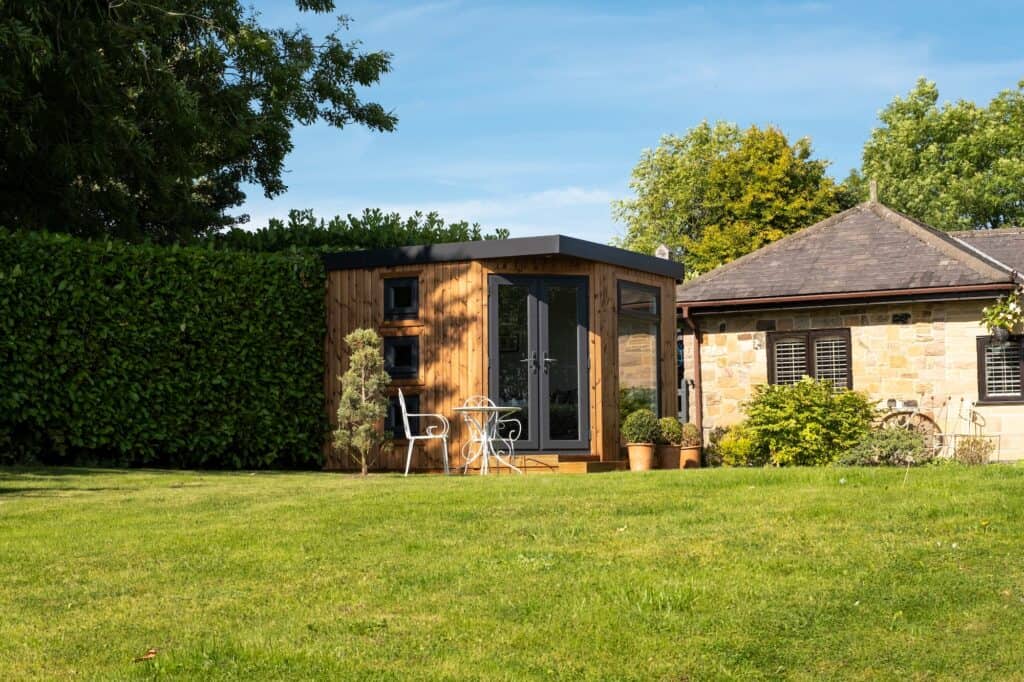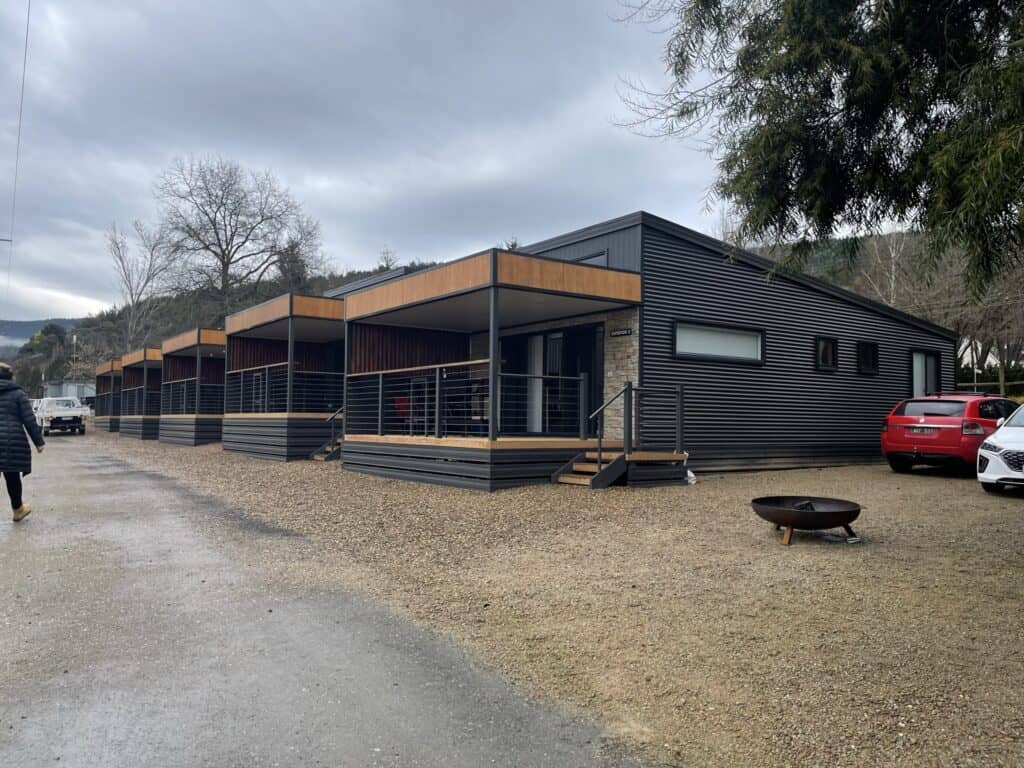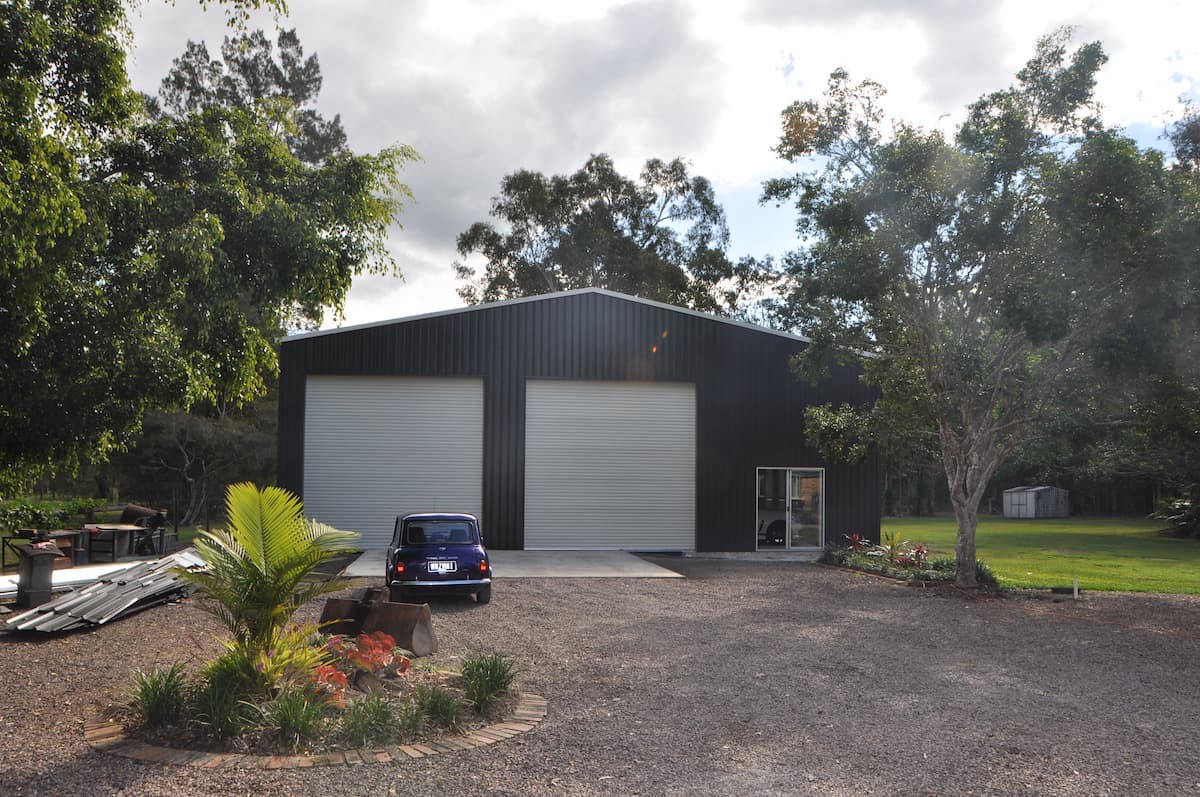Australian summers are fantastic. Days at the beach or spent by the pool, all of the outdoor adventures. And that beautiful, but also awful, blazing heat. Most of us like to spend time outdoors, in the backyard and in the shed, during those clear sunny days that summer brings. If this thought brings to mind a bunch of sweat and minimal comfort, we have great news — it’s not the only way. In fact, sheds can be kept nice and cool in the summer, by design. Making summer shenanigans all the more enjoyable.
So, how do you keep a shed cool in the summer? A lot of the shed cooling comes down to artful design by the shed retailer when the shed is built. But there are also ways this can be amended after, if you’re looking to cool an established shed.
As this is the blog for Shed Retailers, we’ll first cover how shed retailers can design sheds to be cooling in the summer. But for the everyday person reading this guide, we’ll also wrap up with a few tips for adding shed cooling elements retrospectively, after a shed has already been established.
Design tips for shed cooling as a shed retailer or designer
Design plenty of doors and windows (strategically)
Designing sheds that allow for more ventilation can make a big difference to your customer in the summer. Windows (especially those with screens) can be opened to let in the maximum airflow — something that feels amazing when there’s a bit of airflow outside, but still helps even on calmer days. It’s important to design the position of these strategically though, and use glass that won’t transfer heat inside, so they don’t add to the problem, which brings us to our next two points…
Keep the position of the shed in mind
While designing plenty of doors and windows is great, it’s important to keep in mind the position of the shed relative to where the sun bores down during the day, as well as where the best airflow tends to come from. Glass panes that are positioned in the direct firing line of the full sun can add a lot of heat to the shed, unless they have certain heat-blocking properties that some glass can have. While there are ways to reduce this (such as adding blinds, louvres, block-out curtains or even a removable outside window cover), designing the shed with the windows in the ideal position for the time of year that the shed will get the most action is always a great move.
Windows that are in the firing line for the direct sun in summer can have their heat impact reduced by adding window awnings or an overhanging roof.

Install heat-resistant or insulated windows
As windows positioned in the wrong spot for the sun’s rays without insulation can account for a large amount of heat gain in summer, selecting window glass that has heat-resistant or insulation properties can make a big difference to the comfort of the shed all year round. Insulated or heat-transfer-resistant windows keep heat in more in the winter and reduce the heat cut-through in summer. If designing a shed with plenty of windows (which can be a great thing for airflow, open design and connectivity with the rest of the house), this is particularly important to consider. While these cost more, they may save more in the long run, reducing the need for other retrospective shed cooling options.
Ensure the shed roof is properly insulated
As seasoned shed retailers and designers would know, shed materials will usually have an insulating property that’s measured on an R-scale. For some, this will be enough insulation, but there are many options that can be looked into to increase the insulation properties of the shed roof. Our customers are often not across this however, so talking to them about the different options, and associated costs, pros and cons, will help ensure they get the level of insulation and cooling they need. For example, the non-residential structure insulated concrete forms, spray-on open cell or closed cell insulation, structural insulation panels and more can be considered.
Another option for roof ventilation is to install a whirlybird, which rotates with the wind and pulls some of the hot air out of the shed.

Add roof ventilation
There are a few different roof ventilation systems that can be considered when designing a shed and ensuring it can stay cool enough for comfort in the summer. Adding roof vents to your shed design is a great way of doing this. Be sure to consider the pros and cons of wind ventilation and cross ventilation design options, as well as the best locations for the vents for the position of the shed relative to the most frequent wind direction for best airflow.
Design supports for an overhead fan
An overhead fan looks great in a shed design and allows for plenty of airflow. Asking your customer whether they’d like a design that allows for a ceiling fan will go a long way to keeping the shed cool in summer, if they choose to go ahead with the addition.
Consider design for an air conditioner
Depending on the local climate and humidity of your customer’s location within Australia, and the amount of time they plan to spend in their shed, an air conditioner may be the way to go. In Queensland’s far north, where humidity can be intense and the cool of winter only lasts a few weeks, plenty of people are passionate about boating and fishing — many spend hours in their ‘boat sheds’ / ‘fishing sheds’ and may really appreciate air conditioning in this area.
Design in external shade where you can
While not all backyards or shed locations can allow for natural shade around them (that also doesn’t risk overhanging trees from eventually falling on the shed), however there are some elements you can add to the exterior of the shed that can help a lot.
A slight roof overhang or well-placed awnings can help with creating a perimeter of shade. But thinking outside the box of the usual shed design can present amazing ideas for external shade that not only helps to cool the shed, but also allows for more enjoyment of the space around the shed. For example, adding a freestanding structure in the perfect position to shade the shed from a lot of the shed could provide an excellent place for BBQs, while creating more external shade. Adding shade cloths and support beams for that shade cloth could provide a great place for the kids to play, while creating the same effect.
Shed cooling options after a shed is built
In addition to the above tips that can be implemented into the design of the shed by the shed designer or shed retailer, there are a number of elements that can be added to the shed retrospectively, to improve its cooling. These tips can be implemented or suggested by shed retailers, or by the shed owner themselves.
So, how do you apply shed cooling elements to your shed after it’s already been built? Here are some great options.
Treat your windows with heat-resistant film
It can be surprising how much heat can be transferred through glass panes if your windows don’t resist the heat. You can purchase heat-resistant window film, and other window insulation applications that could help.
Add block-out curtains or cooling blinds
If you are getting a bunch of heat coming through the glass panes of your windows, adding block-out curtains, heat-blocking window shades, or heat-resistant blinds that reject the heat could make a big difference during the day.

Add fans
If your overhead support beams can structurally support a fan (best to check with a professional on this), you could add an overhead fan to your shed. If you’re unsure, you could add standing fans, or desk fans, throughout your shed to create that airflow.
Add air conditioning
First checking whether your shed can structurally support an air conditioning unit (air conditioning people can help you with that), adding an air conditioner (where you can) is a no-brainer for shed cooling when it’s most needed. As the air conditioning will likely run for much less time than your household air conditioning will, you’re likely to spend far less than you think on your power bills — particularly if you turn it off once the shed has cooled enough for comfort. If your shed design doesn’t allow for a standard mounted air conditioner, there is always the option of adding a standing air conditioner or a moveable standing air conditioner.
Install fly screens and open windows
It sounds obvious, but opening the windows within your shed to allow for more airflow will help with cooling the room. Even if it’s a window that’s in the direct sun, opening the window will reduce the surface area of heat-transferring glass while also providing a bit of airflow on all but the most stuffy days. Installing fly screens will allow you to keep out the bugs, and make it harder to climb in through the window if you leave your windows open when the shed is unattended.
As a last resort, add a drinks fridge
If all else fails, don’t panic. Just add a drinks fridge or an ice block freezer. It’s amazing how much a cold beverage or the classic Aussie summer snack Zooper Dooper can make you feel cooler when it’s hot around you. Before you ask, we’re not sponsored by the big ZD. We’ve just been through more than a couple of summers in our awesome Australian summers.

